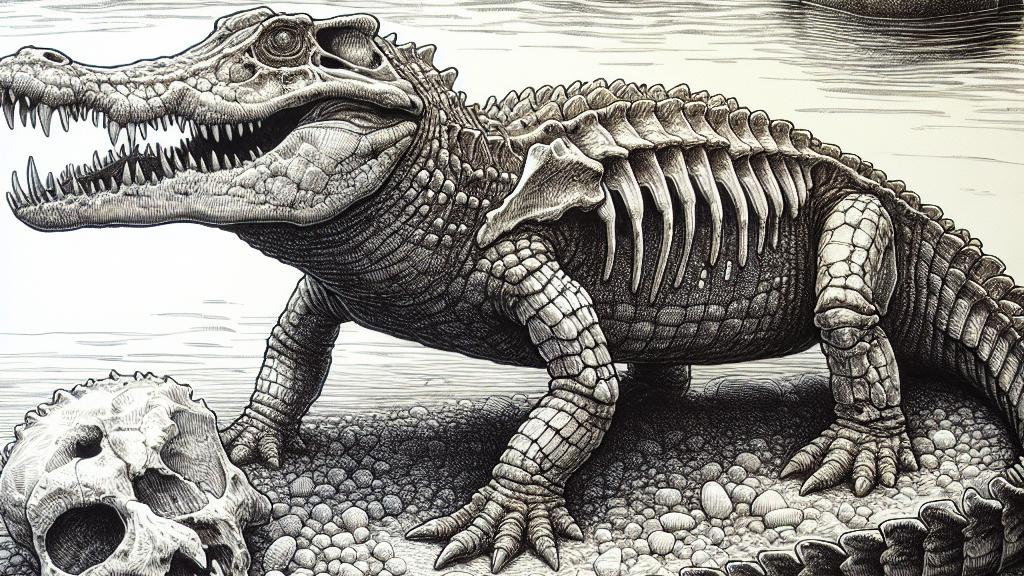Unearthing the Aquatic Ancestor: Meet the 135-Million-Year-Old Marine Croc!
Overview
- The discovery of Enalioetes schroederi reveals significant aspects of marine crocodile evolution.
- Fossils provide critical insights into Cretaceous ecosystems, showcasing biodiversity.
- Exceptional preservation allows for detailed anatomical analyses of ancient species.

A Groundbreaking Discovery from Ancient Seas
In a remarkable find from Germany, researchers have identified a new species of marine crocodile, Enalioetes schroederi, which lived around 135 million years ago during the Cretaceous Period. This discovery was made by an international team of scientists dedicated to understanding the evolution of this unique group known as Metriorhynchidae, which showcases stunning adaptations for life in water. The fossil is especially valuable due to its well-preserved, three-dimensional skull, setting it apart as one of the best-preserved examples from this period. By studying these ancient creatures, scientists hope to reconstruct not only their physical features but also delve into their ecological roles, thereby enriching our understanding of Cretaceous marine ecosystems.
Unraveling Evolutionary Secrets
The exploration of Enalioetes schroederi provides profound insights into the evolutionary changes that occurred among marine crocodiles during the Cretaceous. Observations reveal distinctive traits, such as larger-than-average eyes and a compact inner ear structure, which suggest adaptations for improved swimming efficiency and predation capabilities. Historically, metriorhynchids transitioned from terrestrial to fully marine lifestyles, developing features like flippers and smooth skin to thrive in aquatic environments. The discovery of Enalioetes further illustrates this evolutionary trajectory, indicating a continued refinement of these adaptations. These findings highlight the role of metriorhynchids as apex predators in their ecosystems, preying on a diverse array of marine life, including fish and invertebrates. Ultimately, this research contributes to our comprehension of how species adapted to dramatic changes in their environments during this vibrant geological period.
A Fossil with a Captivating Legacy
The intriguing history of the fossil adds significant context to its scientific importance. Originally discovered in a quarry in Sachsenhagen over a century ago, it was believed to be lost during World War II, only to resurface years later in the Minden Museum. This fossil, alongside its impressive preservation, has allowed researchers to conduct advanced imaging techniques such as CT scans, revealing intricate details of its anatomy and providing vital information regarding its sensory adaptations. The re-emergence and examination of this specimen stress the importance of preserving paleontological artifacts, emphasizing that they hold the key to unlocking the secrets of ancient ecosystems. By studying the Enalioetes schroederi fossil, scientists are brought closer to understanding the complex web of life that thrived in Cretaceous oceans and the evolutionary processes that shaped marine biodiversity.

Loading...